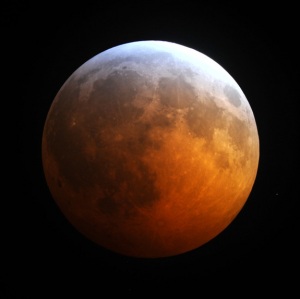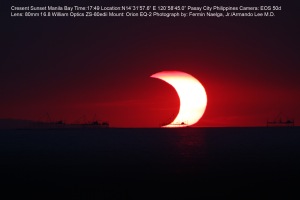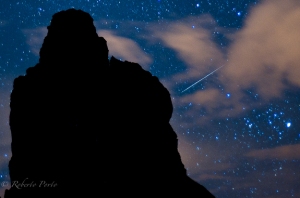
Looking ahead to next year
Astronomy questions and answers – 2014 is expected to be a banner year for the human journey to the beginning of space and time. This year we are treated to a total eclipse of the Moon for the first time since December 2011. Find a good viewing spot on the night of April 14/15 and watch as the Full Moon falls far into the Earth’s shadow. Skywatchers and astronomers across North America can watch the entire show from the comfort of their favorite dark sky viewing spot. The partial phases of the eclipse will get started around 1:58 a.m. eastern standard time. Watch during the next hour, or so, as the Moon darkens as totality nears. Totality lasts from about 3:06 to 4:25 and the Moon should look orange-red during this period as sunlight filters through the Earth’s atmosphere. The show should finish around 5:33 a.m, with a wrap up of the partial phases.
The Moon once again falls into the Earth’s shadow on the morning of October 8, 2014. The partial phases of this celestial event get started around 5:14 a.m. eastern standard time, with totality occurring at 6:24 a.m. The Moon will spend about an hour immersed in the shadow of Earth, before reappearing like a phantom at 7:24 a.m. Skywatchers and astronomers located in western North America will have the best seat for the show while people on the East Coast will get a partial show.
No total eclipse of the sun in 2014

There will be no total eclipse of the sun during 2014, but on the afternoon of October 23 skywatchers and astronomers across North America will be treated to a partial eclipse of the closest star to Earth. Viewers in the majority of the United States of America should see the Moon block over 40 percent of the Sun’s disk from view while people in the northern states and lower Canada should see the Moon cover over 60 percent. The best view of this partial solar eclipse will be in the far northern regions of Canada, with about 81 percent coverage of the Sun’s disk.
Planet hunters should enjoy the show during 2014

Planet hunters can book a seat for the dramatic appearance of Mars in the sky during spring of 2014. The Red Planet reaches opposition April 8, and will shine at magnitude -1.3 and appear big (15”) and bright when viewed through a telescope. Mighty Jupiter reigns supreme in the sky during the month of January 2014 and will peak early during this month. Saturn will also be spectacular to view both a few months before and after opposition on May 10, 2014, while beautiful and serene Venus will dazzle skywatchers before dawn during late winter and spring.
Meteorite hunters look forward to potentially great 2014

Meteorite hunters can also look forward to a potentially great year of viewing one their favorite celestial bodies. Viewers planning to look at the Perseids during August will have to deal with the light from a Moon which will be almost full, but people watching the Quadrantids during January won’t have to deal with much light from this source. The other expected meteorite showers during 2014 should all be free from interfering light from the moon. All-in-all 2014 should be a memorable year for astronomers and backyard skywatchers taking part in the human journey to the beginning of space and time.
Watch this YouTube video on the expected lunar eclipse in 2014 https://www.youtube.com/watch?v=9P5sQ0iSc0w.
Watch this YouTube video on the expected partial solar eclipse on October 23 https://www.youtube.com/watch?v=dnolE2bcGUg.
Watch this YouTube video on the 2014 Quadrantids meteorite shower https://www.youtube.com/watch?v=wViXDdbRC7Y.
Read about NASA’s Messenger spacecraft and its mission to Mercury
Have you heard about the recent meteorite that exploded near the Ural Mountains
